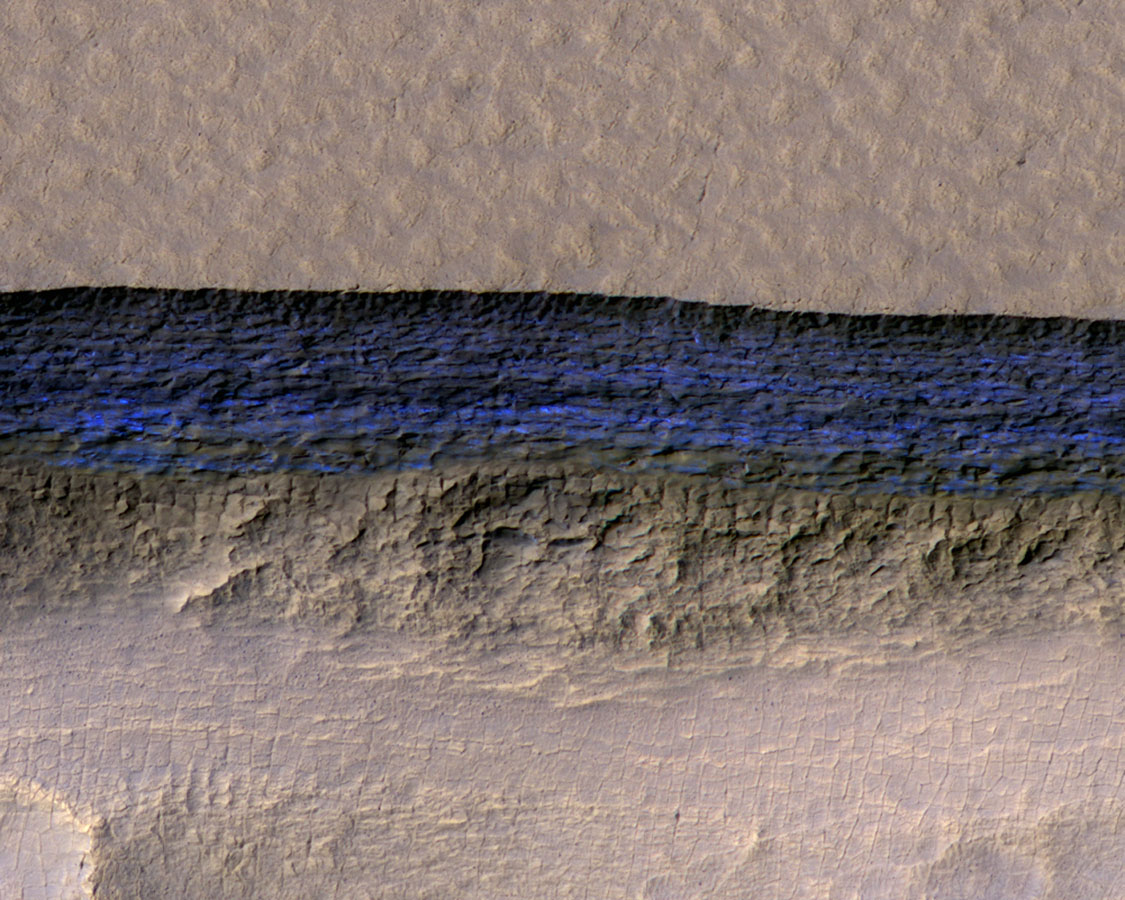Exposed subsurface ice sheets in the Martian mid-latitudes
Some locations on Mars are known to have water ice just below the surface, but how much has remained unclear. Dundas et al. used data from two orbiting spacecraft to examine eight locations where erosion has occurred. This revealed cliffs composed mostly of water ice, which is slowly sublimating as it is exposed to the atmosphere. The ice sheets extend from just below the surface to a depth of 100 meters or more and appear to contain distinct layers, which could preserve a record of Mars’ past climate. They might even be a useful source of water for future human exploration of the red planet.
Abstract
Thick deposits cover broad regions of the Martian mid-latitudes with a smooth mantle; erosion in these regions creates scarps that expose the internal structure of the mantle. We investigated eight of these locations and found that they expose deposits of water ice that can be >100 meters thick, extending downward from depths as shallow as 1 to 2 meters below the surface. The scarps are actively retreating because of sublimation of the exposed water ice. The ice deposits likely originated as snowfall during Mars’ high-obliquity periods and have now compacted into massive, fractured, and layered ice. We expect the vertical structure of Martian ice-rich deposits to preserve a record of ice deposition and past climate.

